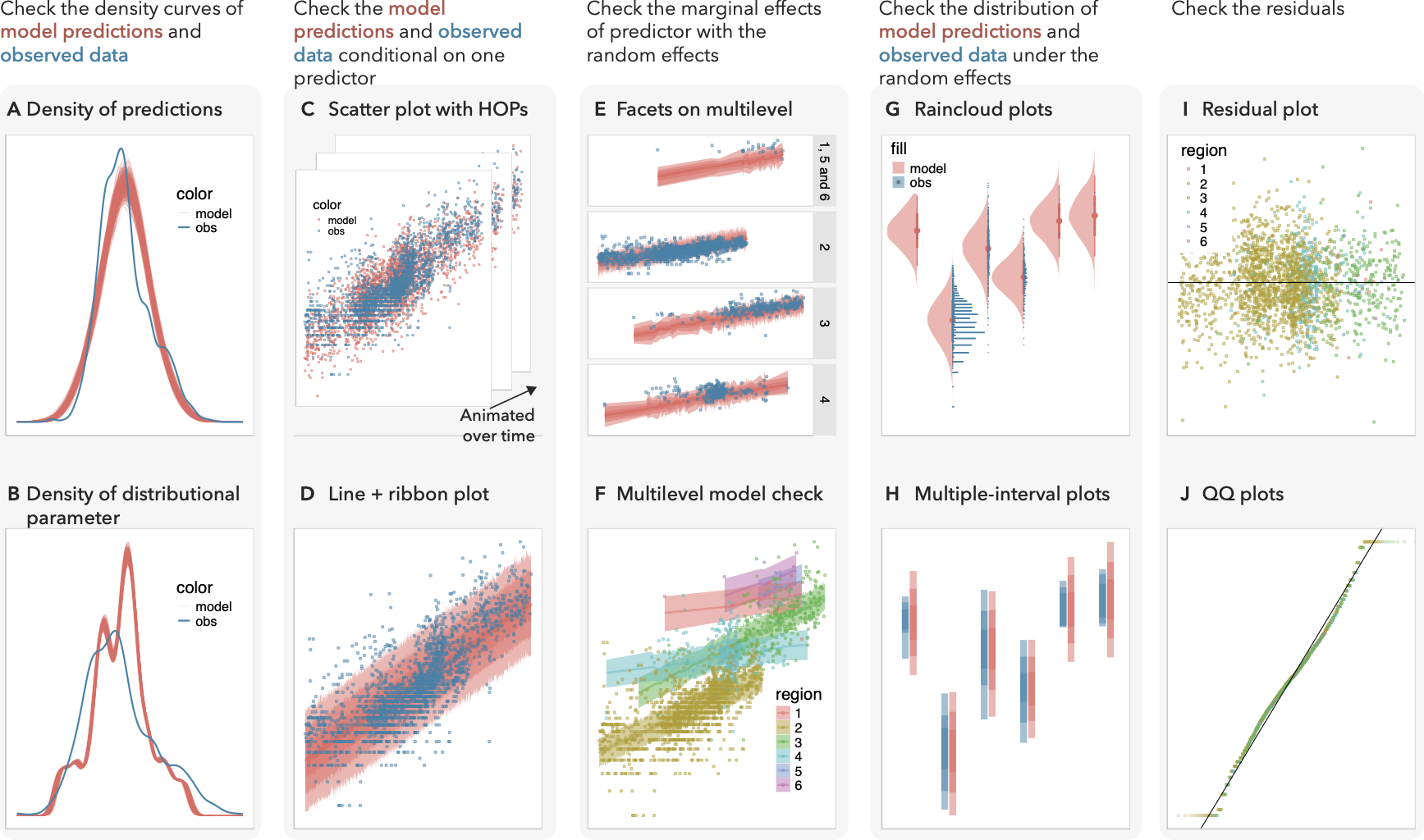VMC: A Grammar for Visualizing Statistical Model Checks
Ziyang Guo - Northwestern University, Evanston, United States
Alex Kale - University of Chicago, Chicago, United States
Matthew Kay - Northwestern University, Chicago, United States
Jessica Hullman - Northwestern University, Evanston, United States
Download Supplemental Material
Room: Bayshore V
2024-10-17T12:54:00ZGMT-0600Change your timezone on the schedule page
2024-10-17T12:54:00Z

Fast forward
Full Video
Keywords
Model checking and evaluation; Uncertainty visualization; Grammar of Graphics
Abstract
Visualizations play a critical role in validating and improving statistical models. However, the design space of model check visualizations is not well understood, making it difficult for authors to explore and specify effective graphical model checks. VMC defines a model check visualization using four components: (1) samples of distributions of checkable quantities generated from the model,including predictive distributions for new data and distributions of model parameters; (2) transformations on observed data to facilitate comparison; (3) visual representations of distributions; and (4) layouts to facilitate comparing model samples and observed data. We contribute an implementation of VMC as an R package. We validate VMC by reproducing a set of canonical model check examples, and show how using VMC to generate model checks reduces the edit distance between visualizations relative to existing visualization toolkits. The findings of an interview study with three expert modelers who used VMC highlight challenges and opportunities for encouraging exploration of correct, effective model check visualizations.